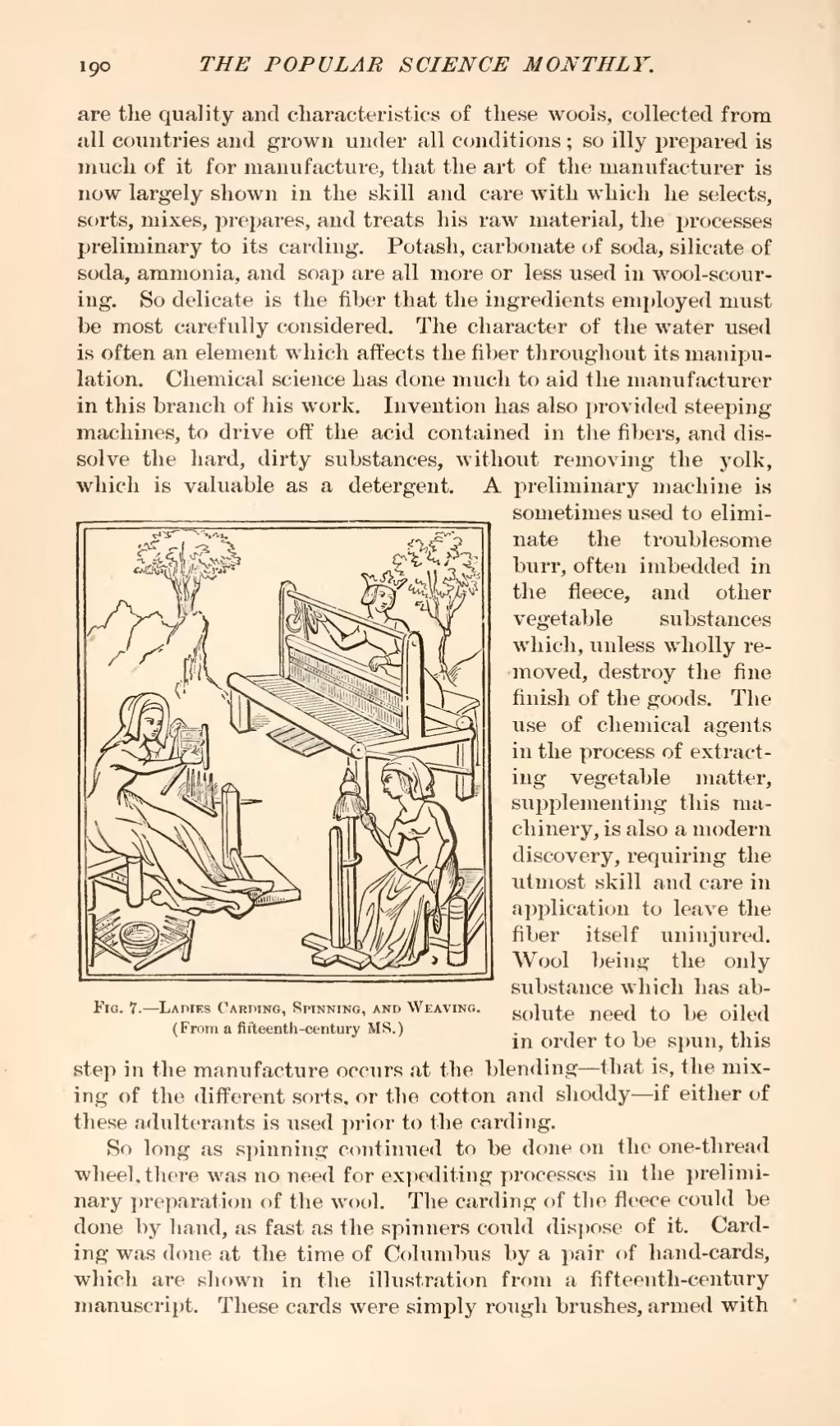are the quality and characteristics of these wools, collected from all countries and grown under all conditions; so illy prepared is much of it for manufacture, that the art of the manufacturer is now largely shown in the skill and care with which he selects, sorts, mixes, prepares, and treats his raw material, the processes preliminary to its carding. Potash, carbonate of soda, silicate of soda, ammonia, and soap are all more or less used in wool-scouring. So delicate is the fiber that the ingredients employed must be most carefully considered. The character of the water used is often an element which affects the fiber throughout its manipulation. Chemical science has done much to aid the manufacturer in this branch of his work. Invention has also provided steeping machines, to drive off the acid contained in the fibers, and dissolve the hard, dirty substances, without removing the yolk, which is valuable as a detergent. A preliminary machine is  Fig. 7.—Ladies Carding, Spinning, and Weaving. (From a fifteenth-century MS.) sometimes used to eliminate the troublesome burr, often imbedded in the fleece, and other vegetable substances which, unless wholly removed, destroy the fine finish of the goods. The use of chemical agents in the process of extracting vegetable matter, supplementing this machinery, is also a modern discovery, requiring the utmost skill and care in application to leave the fiber itself uninjured. Wool being the only substance which has absolute need to be oiled in order to be spun, this step in the manufacture occurs at the blending—that is, the mixing of the different sorts, or the cotton and shoddy—if either of these adulterants is used prior to the carding.
Fig. 7.—Ladies Carding, Spinning, and Weaving. (From a fifteenth-century MS.) sometimes used to eliminate the troublesome burr, often imbedded in the fleece, and other vegetable substances which, unless wholly removed, destroy the fine finish of the goods. The use of chemical agents in the process of extracting vegetable matter, supplementing this machinery, is also a modern discovery, requiring the utmost skill and care in application to leave the fiber itself uninjured. Wool being the only substance which has absolute need to be oiled in order to be spun, this step in the manufacture occurs at the blending—that is, the mixing of the different sorts, or the cotton and shoddy—if either of these adulterants is used prior to the carding.
So long as spinning continued to be done on the one-thread wheel, there was no need for expediting processes in the preliminary preparation of the wool. The carding of the fleece could be done by hand, as fast as the spinners could dispose of it. Carding was done at the time of Columbus by a pair of hand-cards, which are shown in the illustration from a fifteenth-century manuscript. These cards were simply rough brushes, armed with

